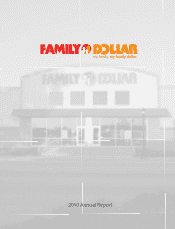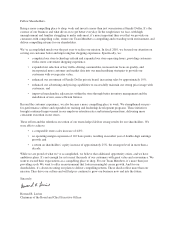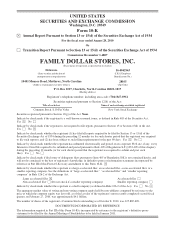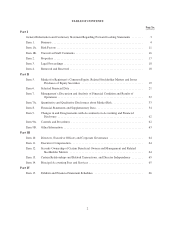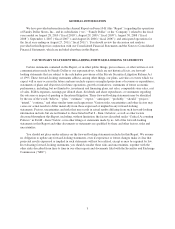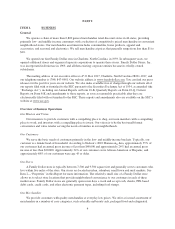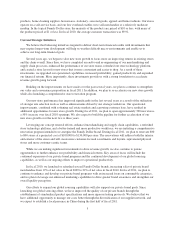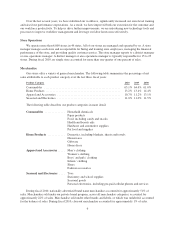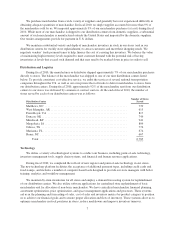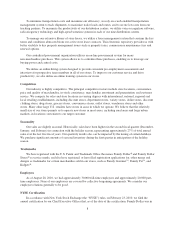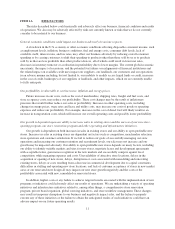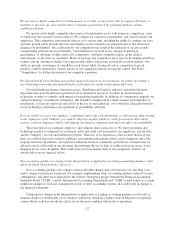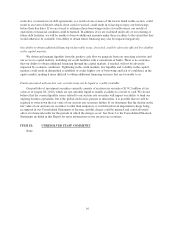Family Dollar 2010 Annual Report Download - page 11
Download and view the complete annual report
Please find page 11 of the 2010 Family Dollar annual report below. You can navigate through the pages in the report by either clicking on the pages listed below, or by using the keyword search tool below to find specific information within the annual report.
We purchase merchandise from a wide variety of suppliers and generally have not experienced difficulty in
obtaining adequate quantities of merchandise. In fiscal 2010, no single supplier accounted for more than 9% of
the merchandise sold by us. We imported approximately 9% of our merchandise purchases (at cost) during fiscal
2010. While most of our merchandise is shipped to our distribution centers from domestic suppliers, a substantial
amount of such merchandise is manufactured outside the United States and imported by the domestic suppliers.
Our vendor arrangements provide for payment in U.S. dollars.
We maintain a substantial variety and depth of merchandise inventory in stock in our stores (and in our
distribution centers for weekly store replenishment) to attract customers and meet their shopping needs. We
negotiate vendors’ trade payment terms to help finance the cost of carrying this inventory. We balance the value
of maintaining high inventory levels required to meet customer demand with the potential risk of having
inventories at levels that exceed such demand and that may need to be marked down in price in order to sell.
Distribution and Logistics
During fiscal 2010, the manufacturer or distributor shipped approximately 7% of our merchandise purchases
directly to stores. The balance of the merchandise was shipped to one of our nine distribution centers listed
below. To provide consistent, cost-effective service, we enlist the services of several national transportation
companies throughout the U.S. as well as our own private fleet of trucks to deliver merchandise to stores from
our distribution centers. During fiscal 2010, approximately 92% of the merchandise sent from our distribution
centers to our stores was delivered by common or contract carriers. At the end of fiscal 2010, the number of
stores served by each of our distribution centers was as follows:
Distribution Center
Number of Stores
Served
Matthews, NC ........................................................ 739
West Memphis, AR .................................................... 615
Front Royal, VA ...................................................... 817
Duncan, OK .......................................................... 749
Morehead, KY ........................................................ 941
Maquoketa, IA........................................................ 809
Odessa, TX .......................................................... 774
Marianna, FL ......................................................... 674
Rome, NY ........................................................... 667
Total ........................................................... 6,785
Technology
We utilize a variety of technological systems to conduct our business, including point-of-sale technology,
inventory management tools, supply chain systems, and financial and human resource applications.
During fiscal 2010, we completed the roll-out of new register and point-of-sale technology in our stores.
The new technology platform facilitates the acceptance of additional payment types, including credit cards and
food stamps, and includes a number of computer-based tools designed to provide our store managers with better
training, analytics and workflow management.
We maintain by-item inventories for all stores and employ a demand forecasting system for replenishment
of our distribution centers. We also utilize software applications for centralized store replenishment of basic
merchandise and for allocation of non-basic merchandise. We have centralized merchandise financial planning,
assortment optimization, price optimization, and space management applications and processes. These systems
aid us in the planning and forecasting of sales, cost of sales and inventory metrics by product category to position
us to achieve our financial goals and to ensure proper allocation and flow of inventory. These systems allow us to
optimize merchandise in-stock positions in stores, reduce markdowns and improve inventory turnover.
7

